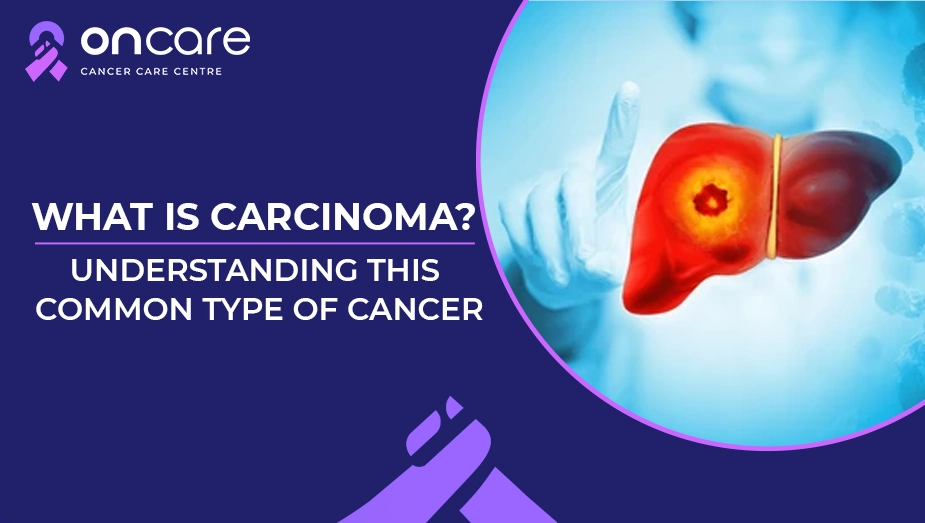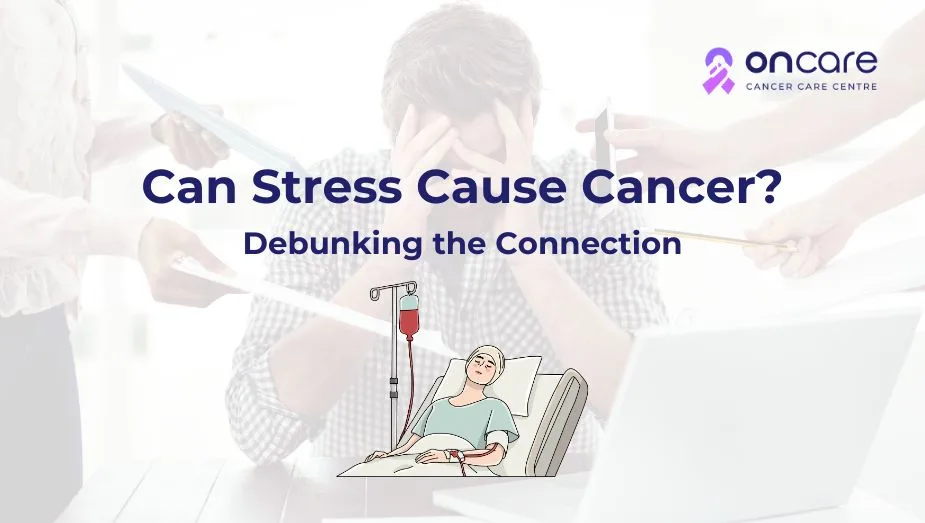Table of Contents
Characteristics of Cancer Cells: What Makes Them Different

Cancer is one of the most complex diseases that happens to humankind, which is a result of normal, healthy cells transforming into abnormal ones that grow uncontrollably. Anyone hearing the word ‘cancer’ can be frightened. Understanding how cancer cells behave will help us to treat and manage them effectively, without losing confidence!
Whether you are concerned about how cancer cells develop and start to spread, in this blog, we discover why it's essential to explore what makes cancer cells quite different from healthy cells.
Key characteristics of cancer cells
Here are some of the key characteristics of cancer cells, which makes them different from healthy cells, including:
1. Uncontrolled cell growth
In our body, healthy cells follow a strict lifecycle, which include their growth and they divide, and even die in controlled manner. While cancer cells ignore these regulatory guidelines, these cells bypass the checkpoint that normally tells a cell when to stop dividing. This often leads to continuous, unregulated cell growth and forming masses which are also known as tumors, (except blood cancers, which spread throughout the body).
2. Evading cell death
In cells, it has built-in self-destroy mechanisms called apoptosis, which helps to eliminate damaged or unnecessary cells. Cancer cells tend to disable this system, which allows them to survive much longer than they should. This type of evasion of death gives them a major survival advantage and contributes to the tumor formation.
3. Ability to invade and spread
Normal healthy cells tend to stay in their designated tissues, while cancer cells generally break this rule. They start to invade the surrounding tissues and spread to distant organs through the blood or lymphatic system. This process is commonly known as metastasis, which makes cancer especially dangerous and difficult to treat as well.
4. Angiogenesis
When the tumor starts to grow in the body, they need oxygen and other nutrients. Cancer cells can stimulate the formation of new blood cells, which is a process known as angiogenesis, to feed the growing tumor. This ability ensures their survival and supports rapid growth of cancer cells.
5. Genetic instability
Cancer cells are known for their genetic mutations. The DNA damage will normally trigger repair or cell death, which goes unnoticed. Over time, this process will lead to chromosomal abnormalities and further genetic mutations, which make cancer cells increasingly aggressive and resistant to further cancer treatment.
6. Avoiding the immune system
The immune system of our body constantly scans for any abnormal cells. Cancer cells use smart ways to hide from immune detection by producing the immunosuppressing molecules. It creates a tumor microenvironment that weakens the immune system.
7. Change in metabolism
Cancer cells renew their energy production systems. Instead of relying primarily on oxygen-based metabolism, as normal and healthy cells do, they often change to a less efficient process known as aerobic glycolysis, also referred to as the Warburg effect. It is a type of metabolic shift that used to help them grow quickly, even in low-oxygen environments.
8. Loss of specialised function
Healthy cells have specific roles, including muscle cells contracting and liver cells detoxifying the body, while cancer cells often use these specialized features. Cancer cells tend to revert to a more primitive, undifferentiated state, which often prioritizes a rapid division over a normal function.
9. Ignoring the growth suppressor gene
Within the DNA there are some ‘brakes,’ known as tumor suppressor genes, like p53 and RB1, which help to regulate the cancer growth. Cancer cells constantly mutate or inactivate these genes, which allows them to bypass growth limits and start to divide uncontrollably.
Why does understanding the characteristics of cancer cells matter?
Understanding how cancer cells behave is not only about science, it helps people to discover more about cancer cells, and take some proactive steps, which it's about saving lives.
By studying their traits, doctors and researchers can understand these:
It helps develop better treatment options
Each characteristic offers a unique target for a treatment or therapy. For example, there are some drugs that block blood vessel growth, which are also known as anti-angiogenic drugs; these tend to trigger cancer cell death (apoptosis inducers).
It helps to detect cancer earlier
Discovering how cancer cells develop and grow and even spread will help to create better screening and diagnostic tools for early detection of cancer cells.
Get more personalised treatments
No two cancers are exactly the same, by studying the specific characteristics of patient cancer cells, doctors can choose treatments that suit the best for the patients.
Improve survival rate and quality of life
Identifying how these cells function often helps in designing the cancer treatments or therapies that are not only more effective but also less damaging to the existing healthy cells.
Note: In simpler terms, understanding the key characteristics of cancer cells often gives access to predicting and even preventing and treating the disease even more successfully.
Consult Today
A cancer diagnosis can be frightening. While modern cancer research continues to discover new ways to target these unique cancer cells, often turning what we have discovered about their weaknesses into more advanced therapies, it can save lives. Every medical advance, especially in cancer care, makes cancer treatment different and brings us to get closer to better, more personalized, and less harmful treatments.
At Oncare, we offer premium-quality cancer treatments, including advanced cancer surgeries at an affordable price range with an experienced cancer specialist consultation.
If you or any loved ones of yours are diagnosed with cancer, then visit Oncare Cancer Center and book an appointment with our experienced cancer specialist today! Get an estimated cost of your cancer treatment today!
Frequently Asked Questions
No, not all cancer cells appear the same, even within a single tumor in the body, or same type of cancer. Cancer cells can often differ in size, shape and the appearance of the nuclei, which is a phenomenon known as tumor heterogeneity.
Here’s how lifestyle factors influence the characteristics of cancer cells, including:
- DNA change
- Immune function
- Metabolic effects
- Genetic and cellular change
No, cancer cells do not always form tumors, although in some cases they form tumors. For example: cancers like leukemia are made up of abnormal blood cells that spread throughout the body without developing a solid tumor or mass.
Book an Appointment
Related Blogs

What is Cancer and How Does It Affect the Body?
Learn what cancer is, how it starts, spreads, and affects the body. Understand early signs, risks, and the importance of timely detection for better outcomes.

What Is Carcinoma? Understanding This Common Type of Cancer
Discover more about carcinoma and how it develops in people, the types of carcinoma, and its diagnosis and treatment, and who’s at risk of developing this cancer.

Is Cancer Contagious? Busting Common Myths About Cancer
Is cancer contagious? Discover the truth about common myths about cancer and its connection between infection and cancer development, and why awareness matters!

Can Stress Cause Cancer? Debunking the Connection
Discover more about the hidden relation of stress and cancer, how stress causes cancer, and how stress affects healthy habits that reduce the risk of cancer!

Cancer Awareness: Why Early Screenings and Treatments Matter More Than Ever!
Learn more about cancer awareness, cancer risk factors, preventive measures, the importance of early diagnosis, and advancements in cancer research and treatments.

